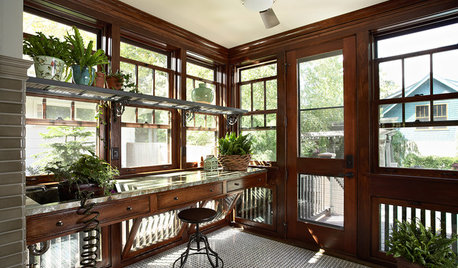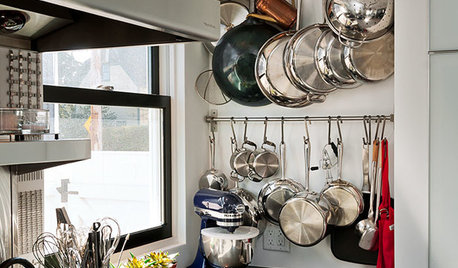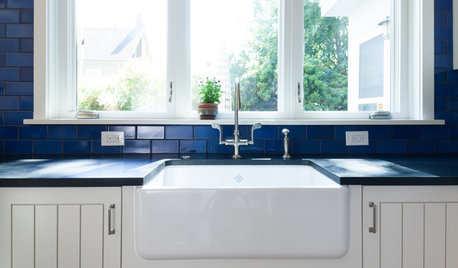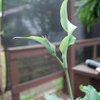Sinking pots?
Cricket_Love
11 years ago
Related Stories

CONTAINER GARDENSSolve Your Garden Border Dilemmas With Planted Pots
Set your containers free from the patio — placed among plantings in the ground, they fill unsightly gaps, let you experiment and more
Full Story
WINTER GARDENINGWinter Gardening: Ideas for a Dream Potting Room
Check out potting rooms that get indoor gardening right — and learn tips for creating your own
Full Story
GARDENING AND LANDSCAPINGGet the Dirt on Potting Benches
Possibly a gardener's best friend, potting benches have some surprising uses both outdoors and inside the home
Full Story
KITCHEN DESIGNHang 'Em or Hide 'Em: 10 Stylish Ways to Store Pots and Pans
Keep cookware neat and at the ready with racks, drawers and creative storage solutions
Full Story
KITCHEN DESIGNKitchen Sinks: Antibacterial Copper Gives Kitchens a Gleam
If you want a classic sink material that rejects bacteria, babies your dishes and develops a patina, copper is for you
Full Story
KITCHEN DESIGNKitchen Sinks: Fireclay Brims With Heavy-Duty Character
Cured at fiery temperatures, fireclay makes for farmhouse sinks that just say no to scratches and dents
Full Story
SHOP HOUZZShop Houzz: Farmhouse Sinks and Faucets
Country charm for your kitchen at a range of prices
Full Story
KITCHEN DESIGN8 Ways to Configure Your Kitchen Sink
One sink or two? Single bowl or double? Determine which setup works best for you
Full Story
MOST POPULARHow to Choose the Right Kitchen Sink
Learn about basin configurations, sink shapes, materials and even accessories and specialty sinks
Full Story
KITCHEN DESIGN8 Good Places for a Second Kitchen Sink
Divide and conquer cooking prep and cleanup by installing a second sink in just the right kitchen spot
Full Story






coll_123
coll_123
Related Professionals
South Elgin Landscape Architects & Landscape Designers · Wakefield Landscape Contractors · Alpharetta Landscape Contractors · Fairhope Landscape Contractors · Old Saybrook Landscape Contractors · Severna Park Landscape Contractors · West Chicago Landscape Contractors · York Landscape Contractors · Daphne Driveway Installation & Maintenance · Los Gatos Driveway Installation & Maintenance · Rochester Hills Driveway Installation & Maintenance · Shorewood Fence Contractors · Sunrise Manor Fence Contractors · Severna Park Fence Contractors · Imperial Beach Solar Energy SystemshostaLes
krayers
ken_adrian Adrian MI cold Z5
User
dray67
hostaLes
Linda's Garden z6 Utah
coll_123
User
Linda's Garden z6 Utah
ken_adrian Adrian MI cold Z5
User
thisismelissa
hostaLes
Linda's Garden z6 Utah
User
hostaLes
ken_adrian Adrian MI cold Z5
petiole2
peggy_hosta